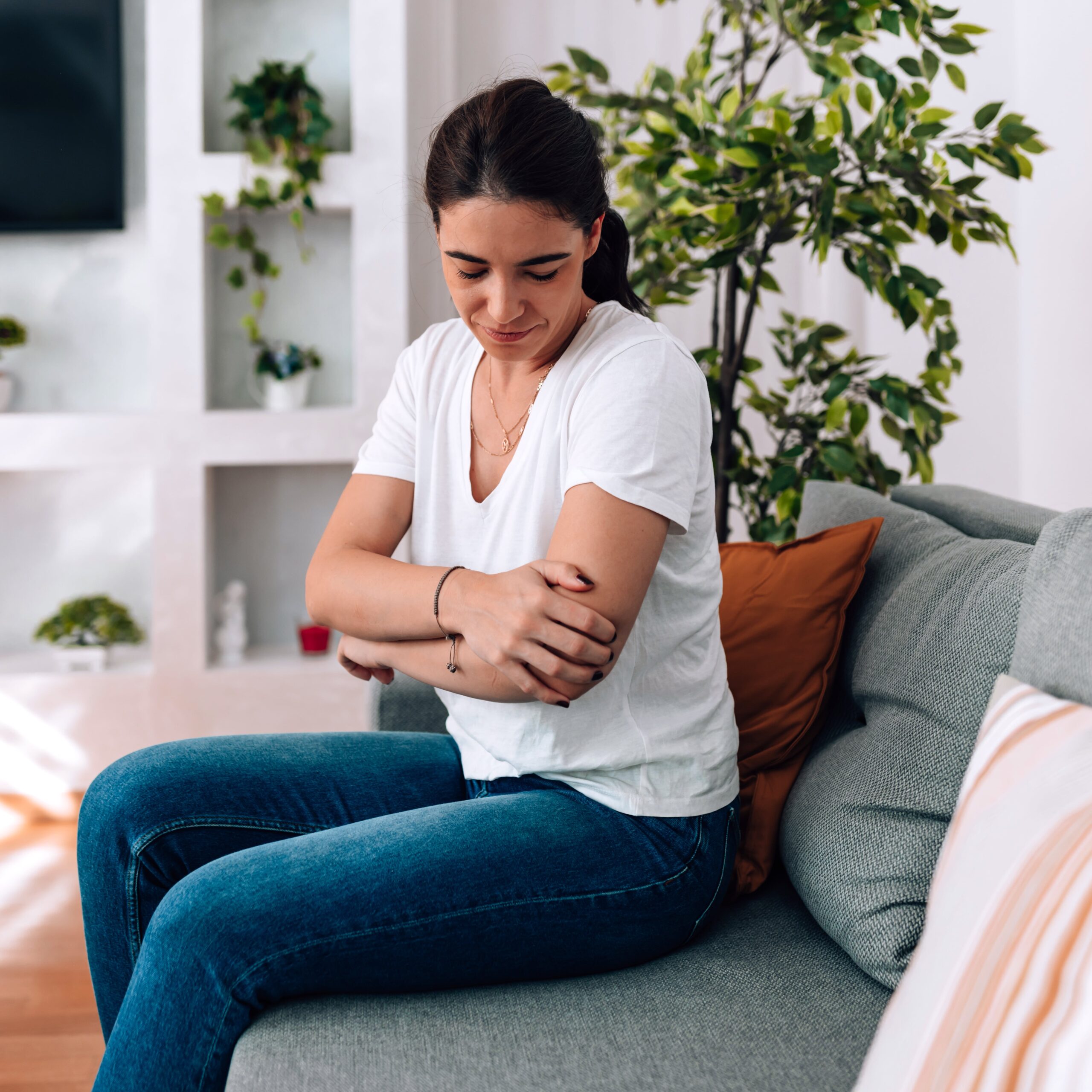
- POPSUGAR Australia
- Fitness
- Stiff Person Syndrome Is More Painful Than You Think – Here’s What to Know
Stiff Person Syndrome Is More Painful Than You Think – Here’s What to Know

Stiff person syndrome has gotten a lot of attention since Celine Dion announced in 2022 that she had been diagnosed with the neurological disorder. The iconic singer has made few public appearances since then, although her presentation at the 2024 Grammy Awards raised fresh questions about what stiff person syndrome is and how it’s treated.
Stiff person is a rare neurological condition often marked by painful muscle stiffness and spasms. The name alone can lead some to underestimate the severity of the condition. After all, the name sounds like something you might experience after a sedentary day at home. But stiff person syndrome is nothing like the kind of pain you might feel from sitting too long or not practicing good posture. Stiff person syndrome is both serious and rare – estimates say it occurs in one out of every million people.
Because it’s so uncommon, the disorder can also be misdiagnosed, leading to a delay in treatment. “Stiff-person is often confused for amyotrophic lateral sclerosis and for spinal cord injury,” says Amit Sachdev, MD, MS, medical director in the Department of Neurology at Michigan State University.
Ahead, neurologists break down everything you need to know about stiff person syndrome, including causes, signs and symptoms and best treatment options.
What Is Stiff Person Syndrome?
Stiff person syndrome, which is also known as Moersch-Woltman syndrome, is a neurological disorder that has features of an autoimmune disease, according to the National Institute of Neurological Disorders and Stroke (NINDS). “It’s progressive, and most people have some degree of decline over time,” says William Buxton, MD, board certified neurologist and director of neuromuscular and neurodiagnostic medicine and of fall prevention at Pacific Neuroscience Institute at Providence Saint John’s Health Center in Santa Monica.
“It’s a central nervous system problem,” says Nizar Souayah, MD, a neurology professor at Rutgers New Jersey Medical School. People with stiff person syndrome may develop stiff muscles in their torso, arms, and legs, and have a greater sensitivity to noise, touch, and emotional distress, which can lead to muscle spasms, Souayah says.
With time, people with stiff person syndrome may become too disabled to walk or move-although this isn’t the case for everyone, Buxton says. Some people with the condition may also be nervous to leave the house because street noises can trigger spasms and falls, NINDS reports.
What Causes Stiff Person Syndrome?
It’s not entirely known what causes stiff person syndrome. However, research suggests that it’s the result of an autoimmune response gone wrong in the brain and spinal cord.
Stiff person syndrome is often linked with other autoimmune diseases like type 1 diabetes, vitiligo, and thyroiditis, NINDS says. The GAD65 auto-antibody, which is a biomarker of autoimmune central nervous system disorders, “is found in the majority of patients with stiff-person syndrome,” Sachev says.
Signs and Symptoms of Stiff Person Syndrome
Doctors say there are a few symptoms people with stiff person syndrome may develop:
- Stiff muscles in the arms, legs, and torso
- A higher sensitivity to noise, touch, and stress
- Muscle spasms
With time, people with stiff person syndrome may form a hunched-over posture, Dr. Buxton says. They can also experience regular falls and injuries from those falls because they don’t have the usual reflexes to catch themselves.
Some of these symptoms can overlap with those of other neurological conditions, like multiple sclerosis. But “stiff person syndrome is suspected when a patient develops rigidity of their muscles suddenly and progressively,” says Dr. Sachdev. He notes that blood tests help solidify the diagnosis.
Treatment Options For Stiff Person Syndrome
Treatment for stiff person syndrome has two main objectives, per Dr. Sachdev. One is to focus on suppressing the immune system, which is attacking the spinal cord. The other is to use medication to reduce muscle spasms.
“To treat stiff person syndrome, inflammation needs to be reduced and spasm-related spinal cord injury needs to be managed,” Dr. Sachdev says. The goal of treatment is to manage symptoms and improve mobility, per Dr. Souayah.
That usually means starting with the medication benzodiazepine to treat muscle stiffness and spasms, he adds. If that doesn’t help spasms, doctors will usually substitute or add in baclofen.
If the treatment still isn’t helping, intravenous immunoglobulin (IVIG) offers another treatment option. Research shows this treatment is effective for more than three years in nearly 70 percent of stiff person syndrome patients, helping to improve daily functioning, balance, spasms, and walking. If more treatment is needed, plasma exchange, the monoclonal antibody rituximab, and other immunosuppressive medications may be used, Dr. Souayah explains.
Treatment can usually help control symptoms to some degree, although they tend to get worse with time. Ultimately, it depends on the person. The prognosis for patients with stiff-person syndrome is variable, with outcomes ranging from patient to patient, Dr. Souayah says.


